Vase in Sèvres porcelain and hand-painted bronze, 19th century
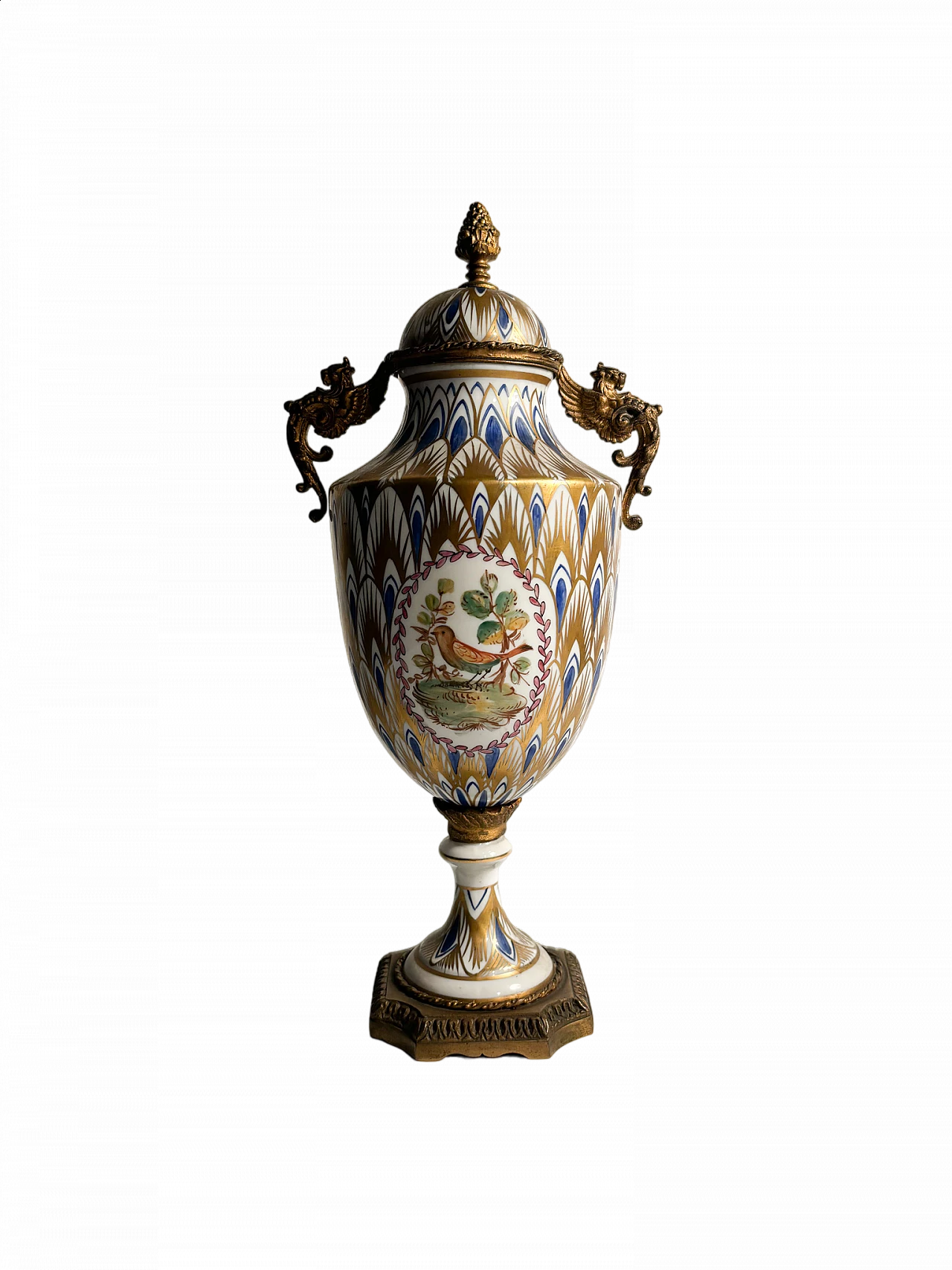
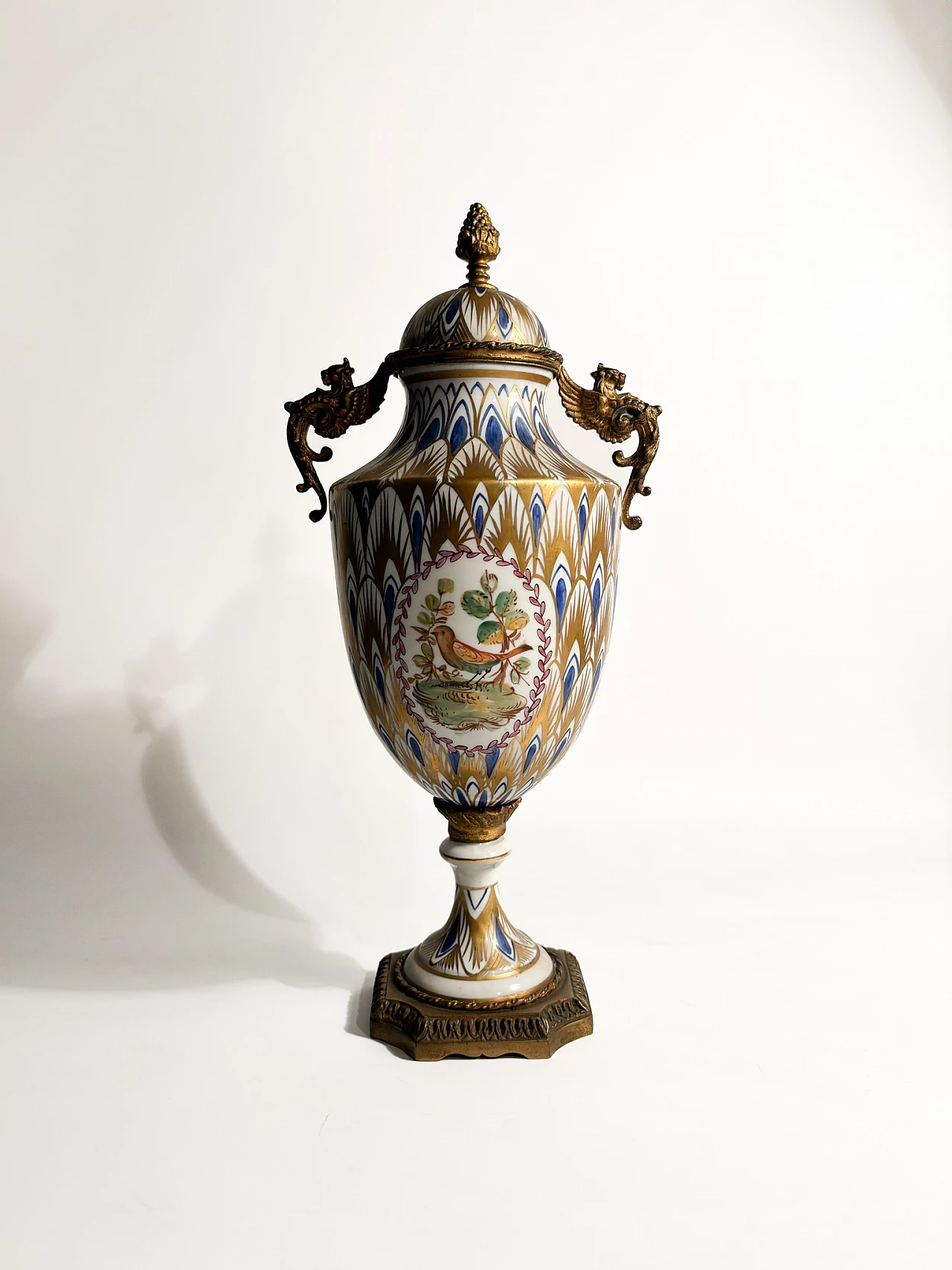
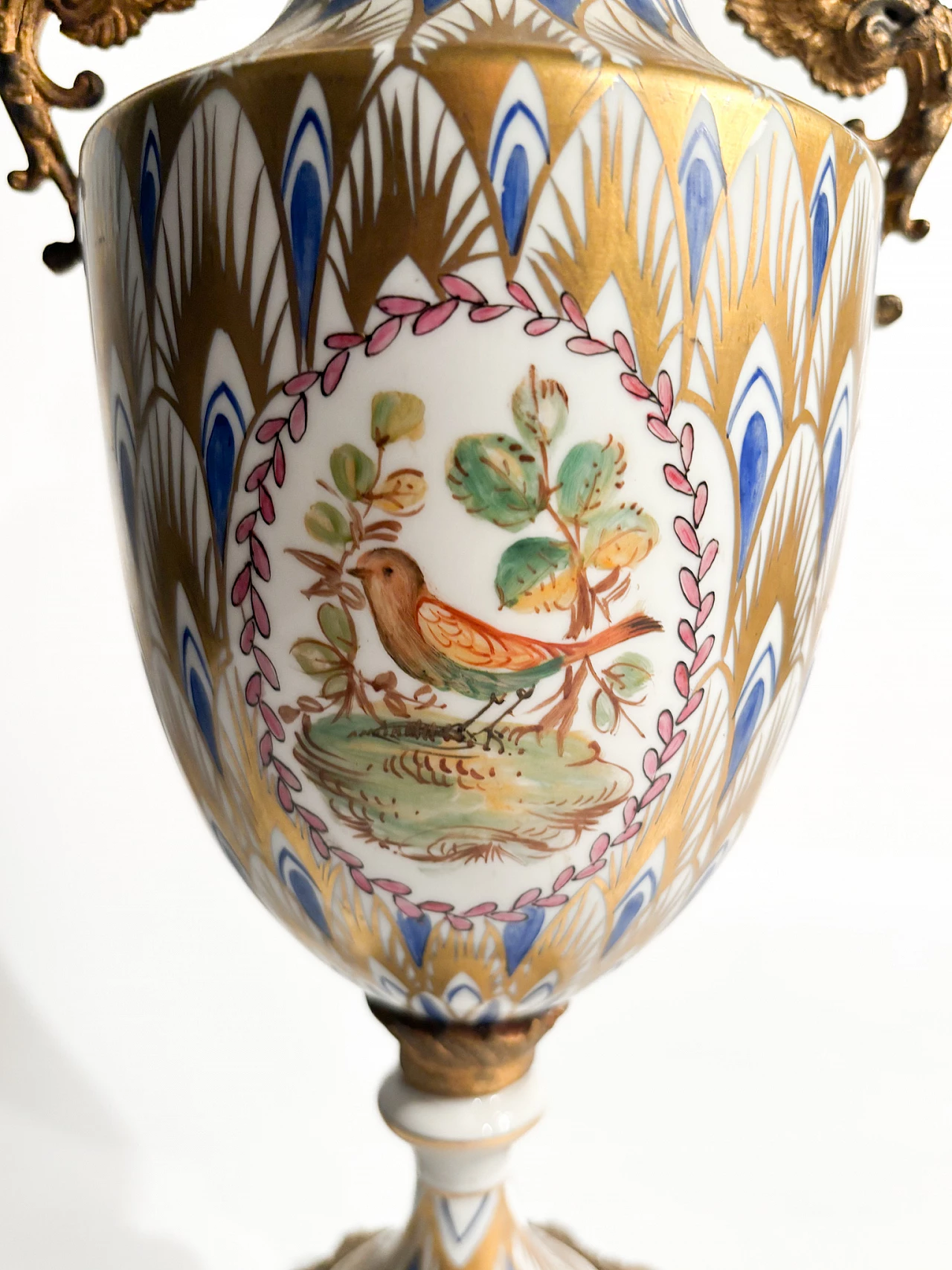
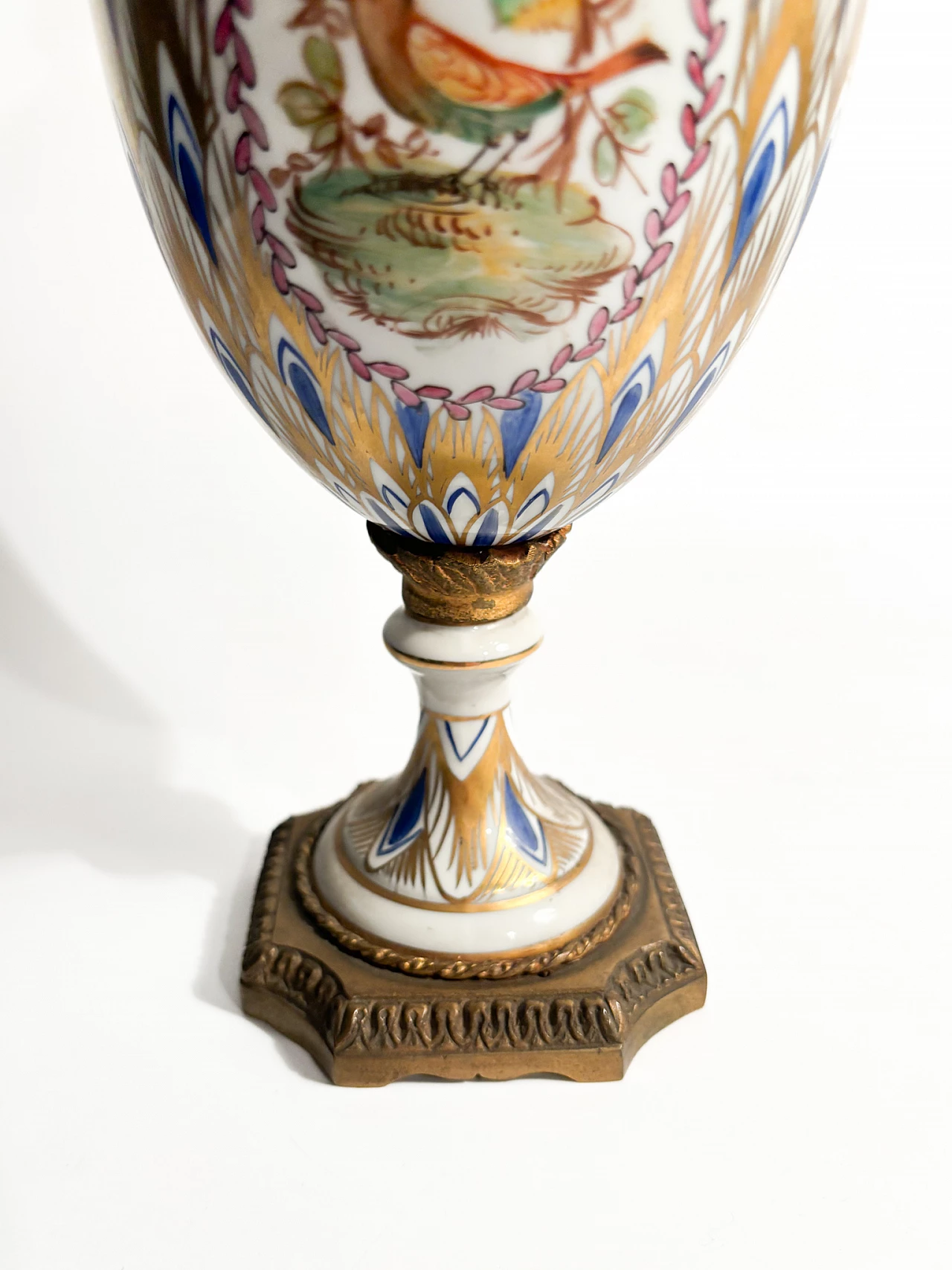
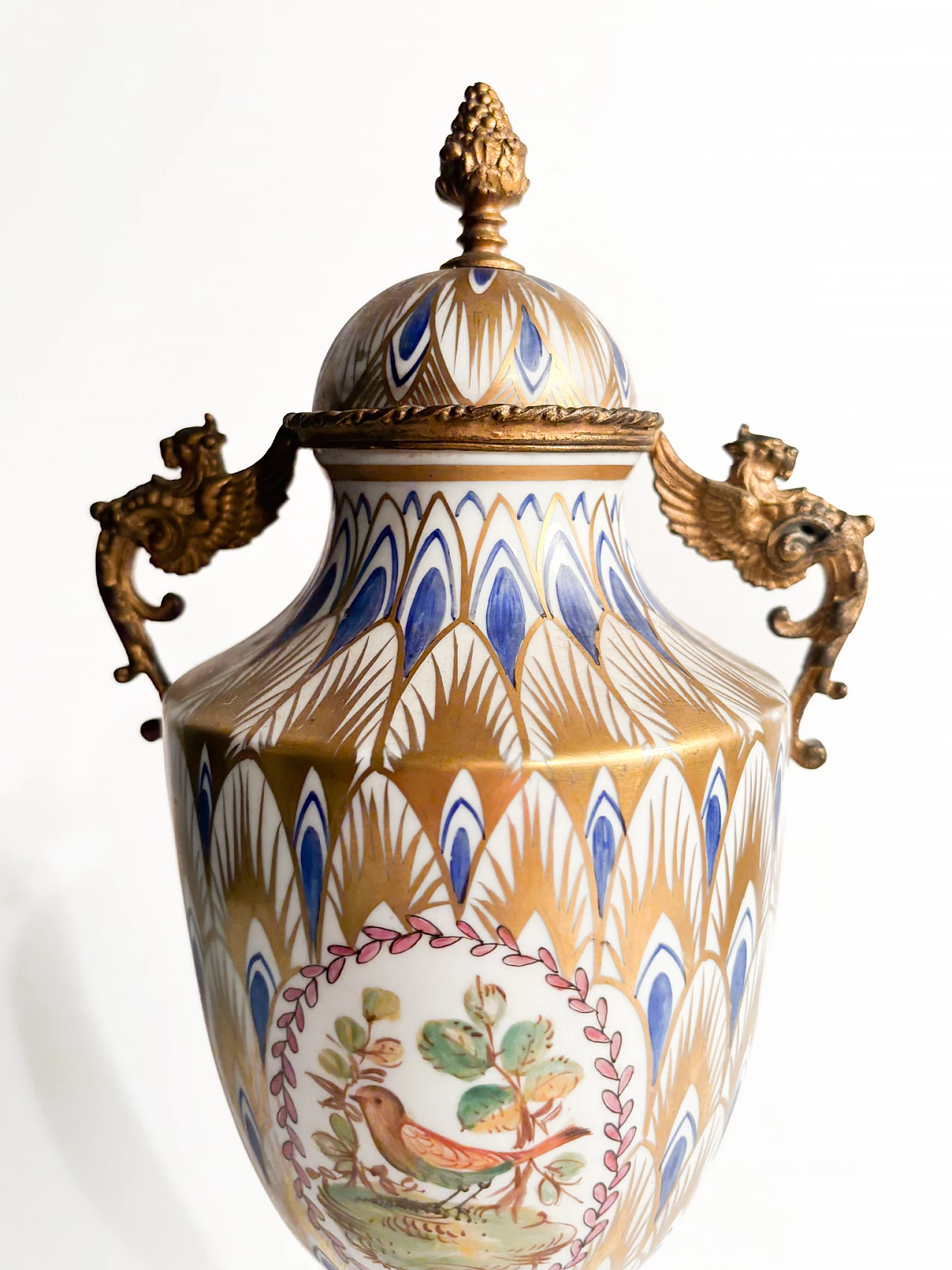
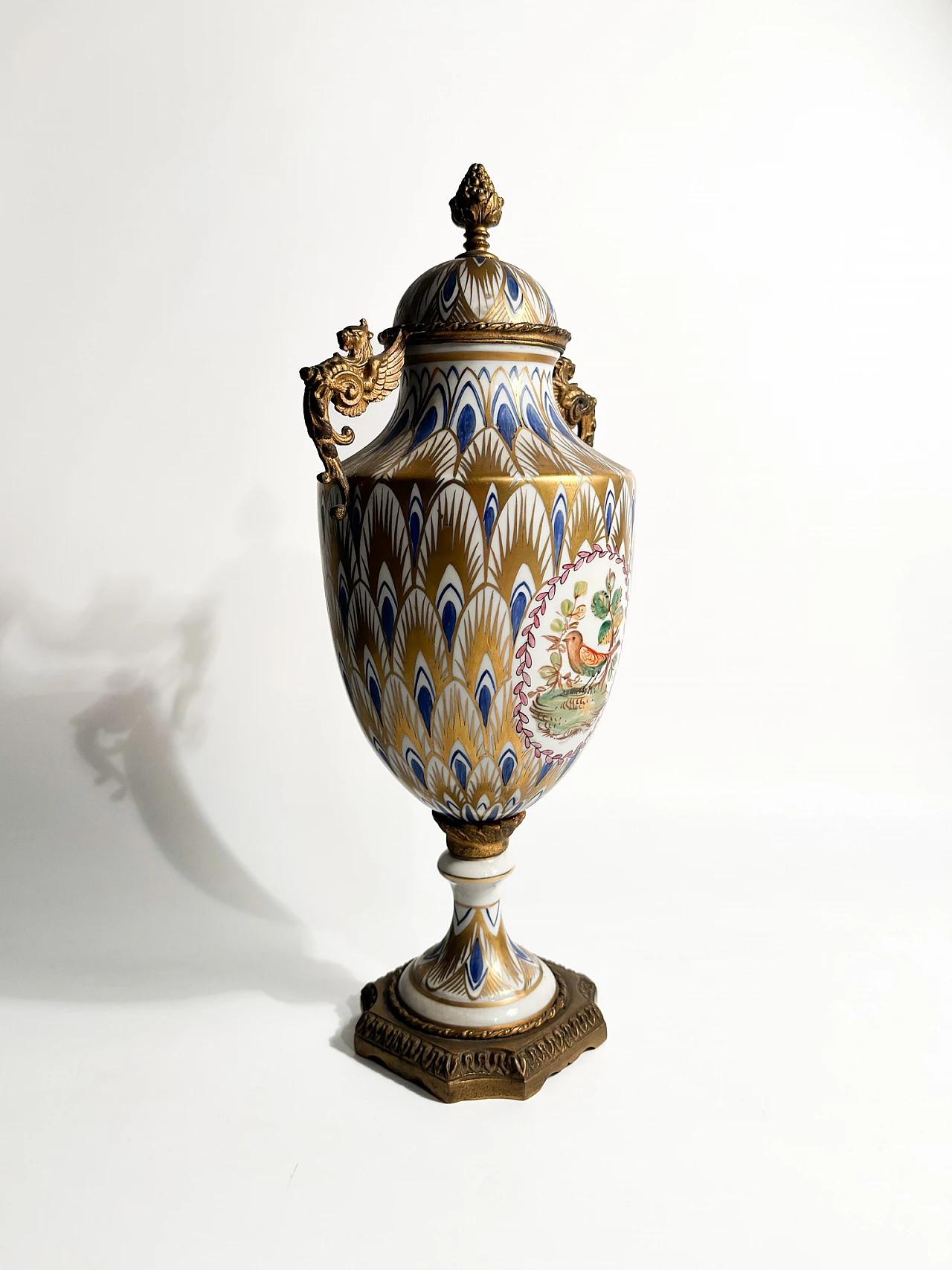
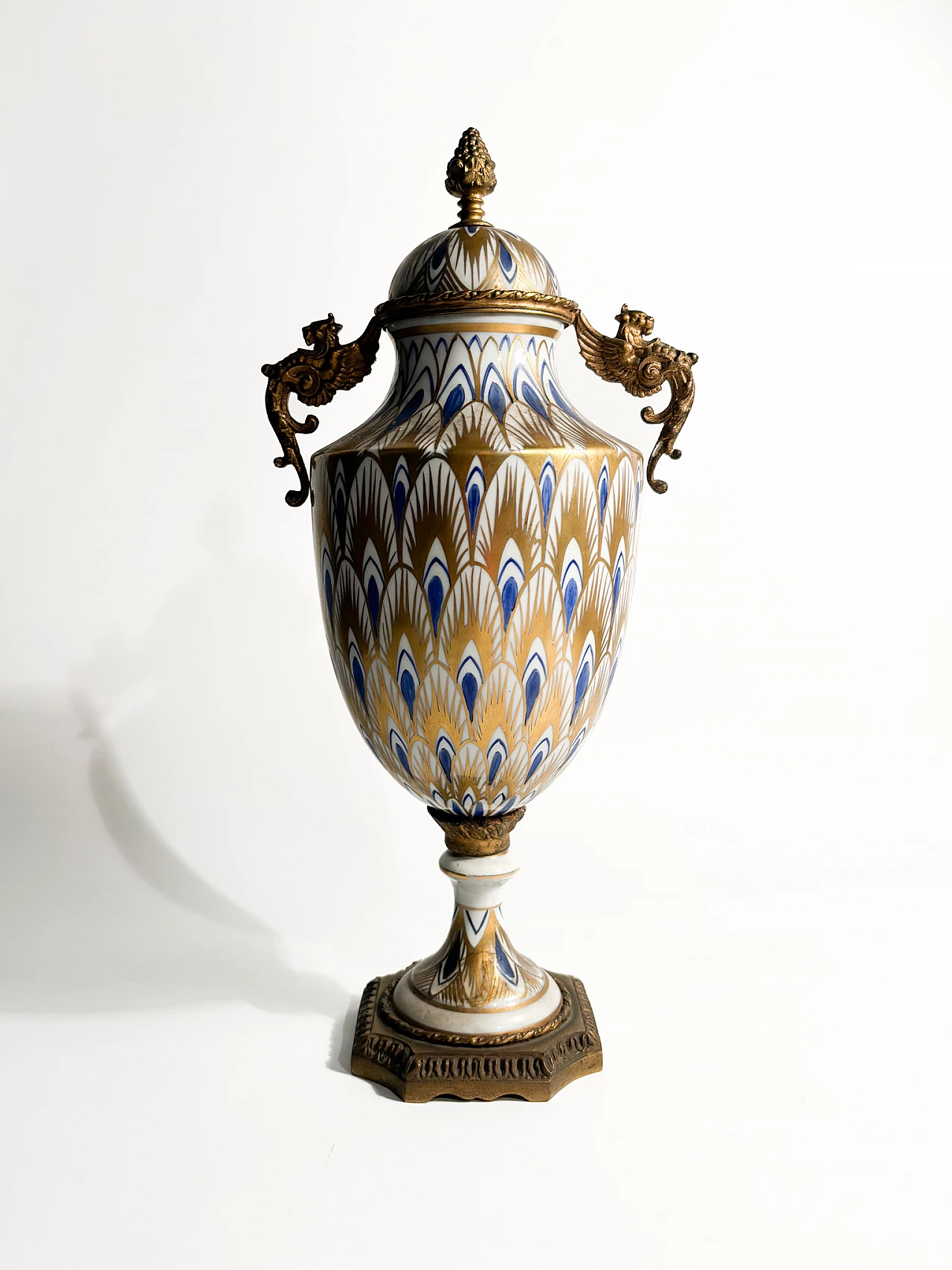
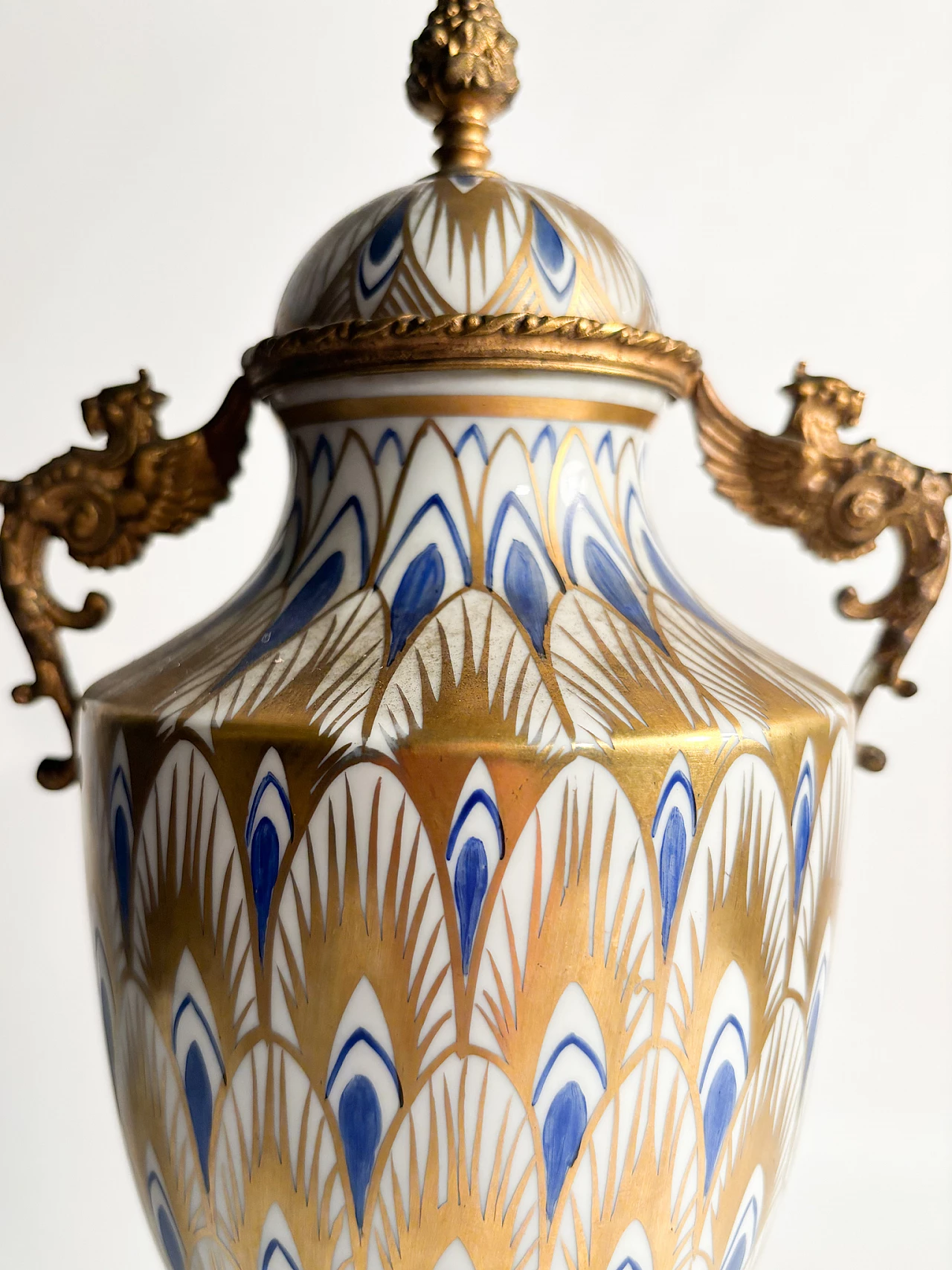
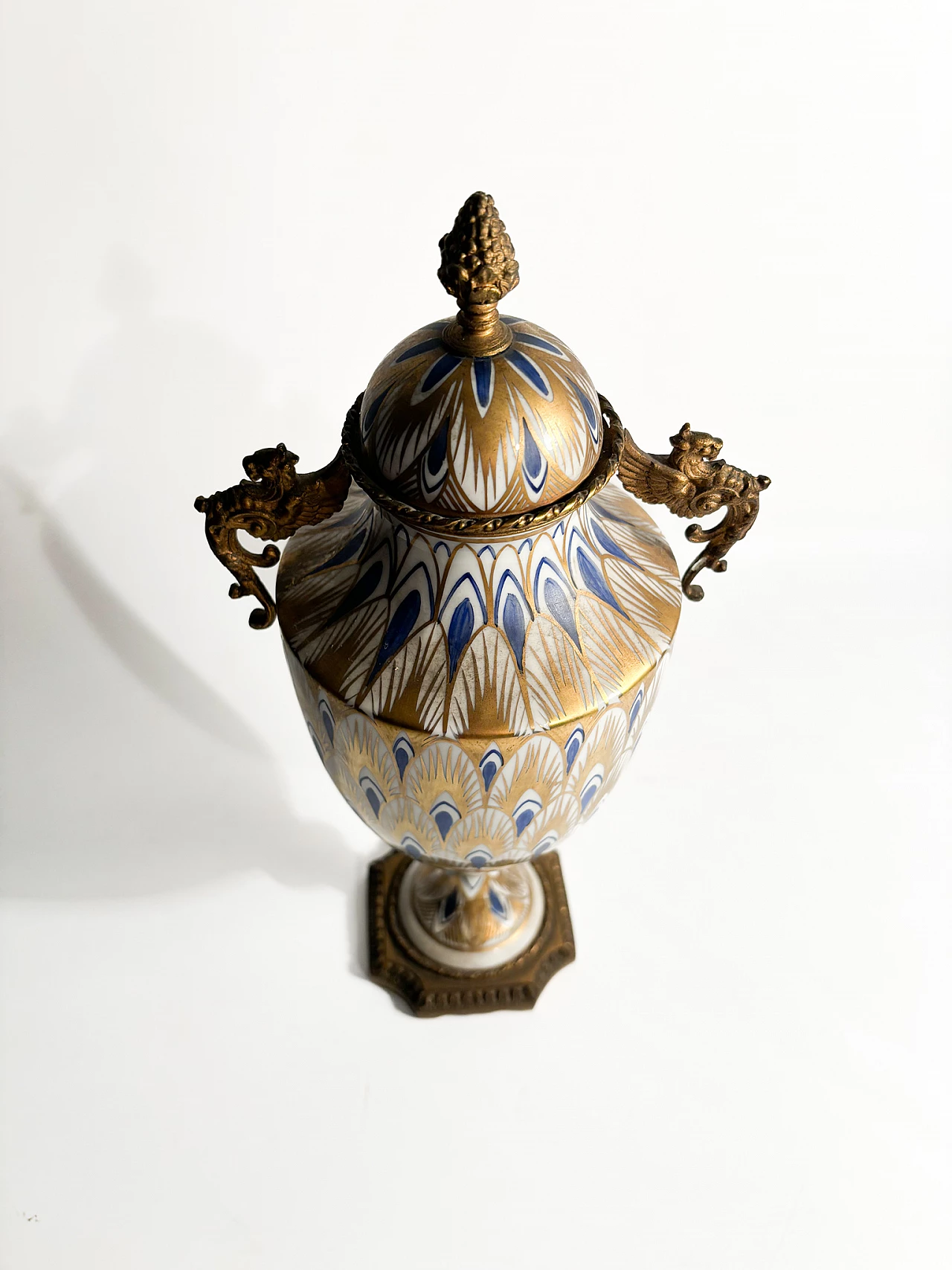
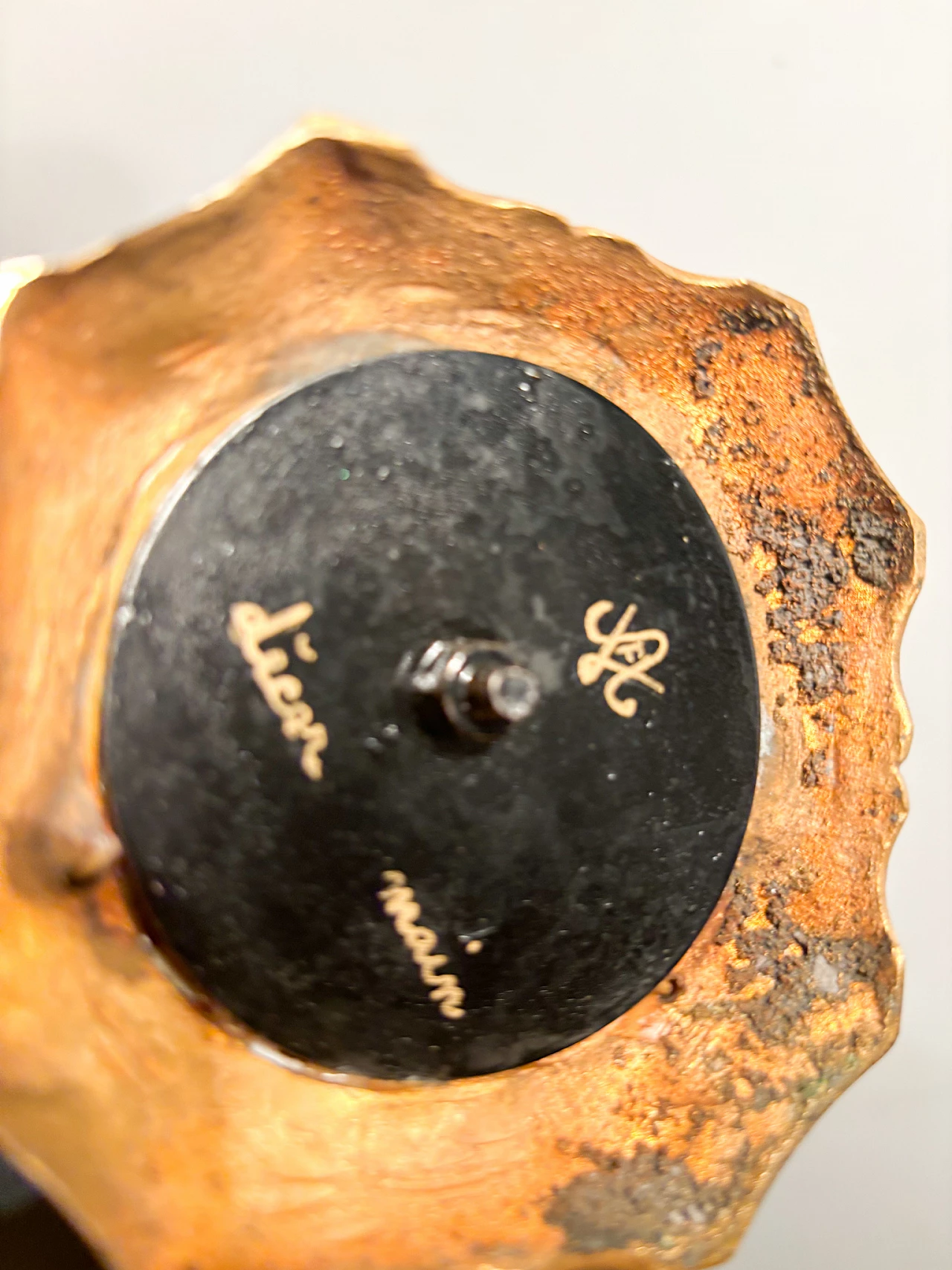










Vase in Sèvres porcelain and hand-painted bronze made in 19th century. Ø cm 15 h cm 32. The Sèvres ceramics are one of the most famous ceramic manufacturers in all of Europe, born in France in the 18th century. From the beginning the production stood out for its elegant, refined and graceful shapes, characterized by the colour Bleu de Sèvres, then combining other colors such as turquoise blue and Persian green. Originally the factory produced soft porcelain, but from the 1760s hard porcelain began to be produced. In the early 19th century we see the chromatic production enriched, adding its most precious colour, their brightness. These ceramics were requested by the greatest European aristocracies who wanted to have table centrepieces, vases, statuettes and small sculptures. Over time the production changed subjects, moving from allegories and mythological subjects of the Baroque, to themes of Greco-Roman antiquity, the taste for Egyptian art and ornaments on a gold background, looking towards neo-classicism. Very famous are the biscuits, delicate figurines left without enamel to distinguish them from the German polychrome production and bring them closer to the cold beauty of marble, which nowadays are highly sought after by collectors. For the creation of these ceramics often made in white, the artists were inspired by gallant scenes or pastoral scenes. Furthermore, the most common decorative motifs were the "rocaille" bodices of gustorococò and the landscapes with pink or blue cupids on a white background.
ID: 39667-1712665117-87564
